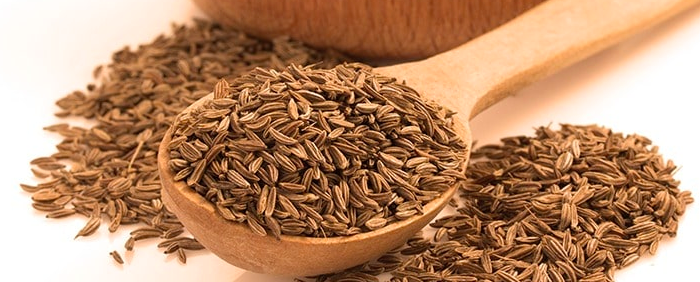
Cumin is a spice used for millennia in many cuisines of the world and for good reason, it contains many health benefits, especially in the digestive sphere.
- Common name: Cumin
- Scientific name: Cuminum
- Other names : White cumin, Moroccan cumin, False anise
- Family: Apiaceae
The health benefits of cumin
Antiflatulent
Whether they are of nervous or functional origin, cumin will help relieve flatulence and spasms of the digestive tract in general.
Diuretic
Very effective consumed in the form of herbal teas or infusions, cumin will allow good urinary elimination and will help cleanse the renal system.
Fight against stomach aches
Cumin is reputed to calm digestive ailments and more particularly stomach aches, so remember to decorate your dishes with this spice to better digest.
Stimulating for lactation
This use of cumin is little known, yet mixed with other herbal teas it promotes lactation to allow good breastfeeding for young mothers.
Nutritional values of cumin (seed)
Per 100g of cumin
| Water | 8.08 g |
| Carbohydrates | 33.7g |
| Fat | 22.3 g |
| Protein | 17.8g |
| Calcium | 934 mg |
| Iron | 66.4 mg |
| Magnesium | 366 mg |
| Manganese | 3.33 mg |
| Phosphorus | 499 mg |
| Beta carotene | 762 µg |
| Energy | 427 kcal |
| Energy | 1780 kJ |
The main nutrients in cumin
The iron
The good iron content of cumin will allow optimal transport of oxygen in the body. Consider combining cumin with other foods that are naturally rich in iron, such as lentils or certain fish.
Magnesium
Essential for the proper functioning of the digestive tract, the magnesium contained in cumin will help relax the smooth muscles of the digestive tract for better digestion.
Phosphorus
These are the nerve cells in your body that will be favored by the supply of cumin phosphorus, they will activate in particular to maintain good muscle and brain dynamism.
Beta carotenes
Cumin also has antioxidant properties with the presence of beta carotenes which will slow cell aging and encourage the renewal of certain tissues in your body.
Cumin is a spice that is consumed in small quantities, these nutrients will therefore be brought up to the amount consumed. Do not forget to balance your diet with a good intake of fruits and vegetables to cover all of your needs in minerals, vitamins and trace elements.
Using cumin in cooking: some recipe ideas
The taste of cumin
You can find a hot and spicy flavor in the cumin, when heated, it reveals more bitter and peppery aromas.
How to choose cumin well?
The cumin should be very dry and of a shade ranging from khaki green to brown. Be careful, however, not to confuse cumin with near cumin (caraway) or black cumin which come from other plants.
How to properly store cumin?
Cumin is stored in an airtight container, away from heat, moisture and light. It will keep better in seeds than ground and will reveal more of its aromas if it is ground to the minute.
How to cook cumin
It can be consumed directly in the form of seeds or ground, it is found in particular in mixtures such as ras el hanout which is used for the preparation of couscous, colombo, chili or mixtures for tagines.
You can integrate it into your raw or cooked recipes at any time during the preparation of the recipe.
Cumin goes perfectly with Dutch cheeses such as Edam and Gouda and can also be consumed as herbal teas or infusions, alone or as a mixture.
Little history of cumin
We find traces of cumin until ancient Egypt where it was used to pay homage to deities. More recently, in India, cumin was smoked like a drug by harem women.
Nowadays, it is widely used in many cuisines of the world, especially in Moroccan, Tex Mex and African dishes.